
We have all seen kids putting on oversized shoes of their family members, without ever thinking if they were meant for men or women. Those little tykes never asked, “can men wear women’s shoes”.
There are women’s shoes that look almost identical to men’s shoes, however that is mostly the case with running shoes or sneakers. In fact, these are the pairs that make men wonder if they can wear them too. (Remember that here we are not talking about unisex shoes.)
Then there are the obvious ones, such as stilettos, mules, kitten heels and so on, that stand out for their feminine design and build.
But where exactly is this question coming from?
Either you have found a nice pair of shoes that look feminine in their design but fit you well, and can save you about hundred dollars, or you are attracted to see the more design options available in women’s footwear.
A simplistic response to this question – can men wear women’s shoes – would be, “Yes, if the pair fits you well and you can pull it off”. However, that would be trivializing a more complex issue that begs in-depth analysis both in terms of its consequences for the health of your feet and social implications.
You would appreciate this when you realize that a man wearing women’s sneakers would be considered acceptable, than the same guy wearing a pair of stilettos. We will get to the social implications part in the end.
Let us examine the factors that need to be considered for addressing the question. We will keep getting answers as we go along. In the last section, we have given a list of women’s shoes men can wear.
Technical Factors that Determine – Can Men Wear Women’s Shoes
Structural differences
The feet of men and women are built differently. The most obvious and conspicuous difference is that men’s feet are larger than women’s.
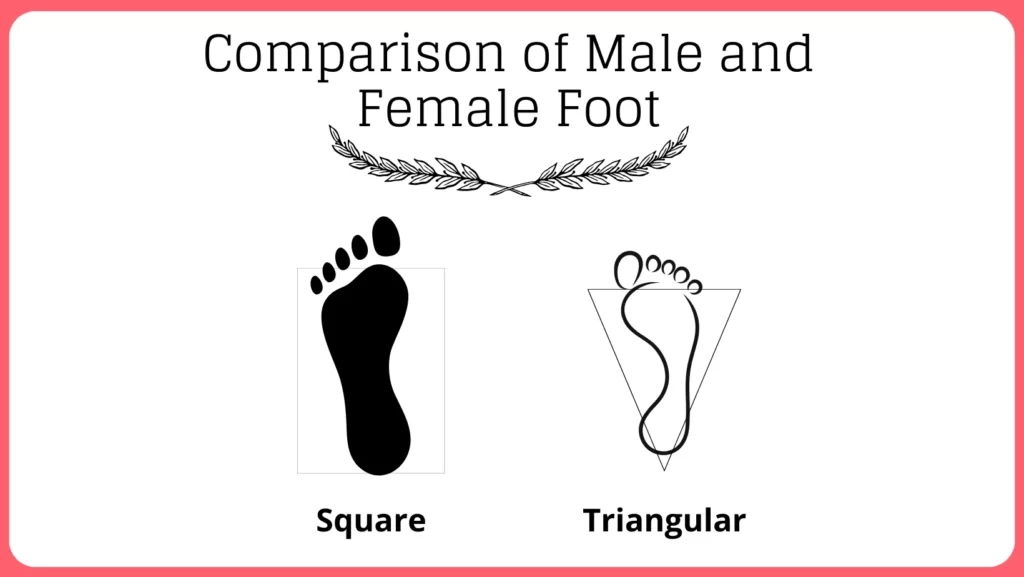
Did you know that women’s feet women’s feet are wider at the forefoot and narrower at the heels and ankles, whereas men’s feet are generally wider?
As a consequence, men’s footwear is wider overall, almost square (actually rectangular) in shape for a large part of the length of the shoes. On the other hand, women’s shoes tend to be wider towards the front and get narrower towards the heels.
Takeaway
Men who have a wider forefoot and narrow heels, will find that women’s shoes fit them better than men’s.
Manufacturer
Every shoe brand would have a different fit for the same foot size. Companies put in a lot of research to get a custom fit that becomes their signature.
There are also companies that have focused on designing unisex shoes since the 1960s and 1970s. Brands such as Adidas, Nike, Puma, Vans, etc. are known to have worked a lot on unisex footwear.
Takeaway
There are chances that a pair of women’s shoes from a brand that also specializes in unisex footwear will fit a man better.
Read also: 27 Uber Cool Eyebrow Slit Ideas for Men
Difference in Weight
For the same height, women tend to have around 15 percent less muscle as compared to men, which is why they have less body weight than men. Therefore, when women walk, their shoes sustain less impact as compared to men.
The midsoles of women’s shoes are designed for this and tend to be lighter than men’s.
One more effect of this lower body weight is that the flex grooves in women’s shoes have to be made deeper to assist during walking or running.
Takeaway
Before deciding to wear a pair of women’s shoes, men must try them on and walk to check for proper cushioning and comfort.
Pronation
Pronation is a natural movement of the foot that occurs during walking or running. It is the inward rolling motion of the foot as it makes contact with the ground that helps to distribute the impact forces. Pronation is a part of one’s gait cycle.
There are three primary types of pronation:
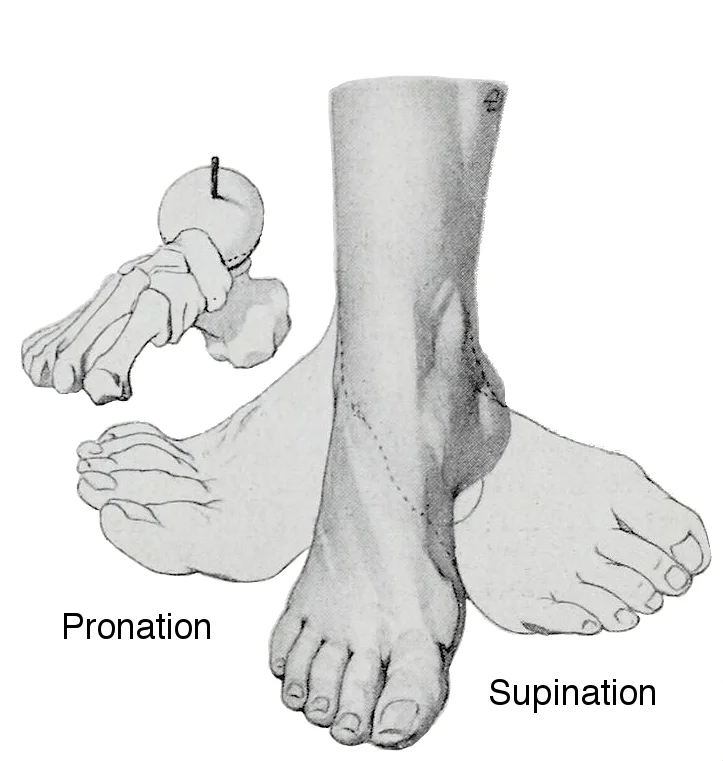
- Neutral Pronation: This is the most efficient and balanced type of pronation, allowing for even weight distribution and proper shock absorption.
- Overpronation: Overpronation occurs when the foot rolls excessively inward upon landing. This can lead to an uneven distribution of weight, potentially causing stress on the arches and knees.
- Underpronation: Underpronation, also known as supination, is when the foot does not roll inward enough upon landing, resulting in inadequate shock absorption, possibly causing issues like shin splints and ankle injuries.
Women are more likely to overpronate than men, which means that a woman’s athletic or running shoes may be special ones made for overpronators.
Takeaway
Men shopping for athletic or running shoes should avoid buying women’s shoes because such shoes are designed differently for men and women based on differences in structure, weight, and gait. Therefore, if a man is looking to wear a woman’s running shoes, he must check his own gait and understand his pronation type. This should be followed by a quick check on the manufacturer’s website to check if the article is specially made for one of the above pronation patterns and confirm if it matches his own.
Price
On average, women’s shoes do tend to cost less than similar shoes for men. There are several factors that contribute to this price difference:
- Fashion Trends: Women’s shoes tend to follow fashion trends more closely than men’s shoes. As a result, there may be a higher demand for new styles and designs among women, which can lead to a wider range of options and price competition.
- Market Competition: The market for women’s shoes is highly competitive, with many brands and retailers offering a wide variety of styles. This competition can drive down prices.
- Economies of Scale: Women’s shoes are often produced in larger quantities than men’s shoes due to higher demand. This can lead to economies of scale, reducing production costs and retail prices.
- Marketing and Branding: In some cases, women’s shoes may be marketed and branded differently, which can influence pricing. Branding and marketing strategies may target women with lower price points to attract a larger customer base.
Takeaway
The lower price tag on women’s shoes, as compared to similar men’s shoes, is a compelling reason for men to buy them.
Read also: What is Alterous Attraction | Is it Genuine or Feigned?
Designs
Women wear more colorful clothing that caters to different occasions and fashion styles. This diversity often requires women to own multiple pairs of footwear to complement their wardrobes. Due to the huge demand for footwear that goes with different outfits, occasions, seasons, activities, comfort, foot health, cultural factors, trends, and so on, brands manufacture footwear in a wide variety of designs, colors, and styles.
On the other hand, the choices for men are limited to some standard colors, designs, and styles.
Takeaway
Men who like experimenting with their outfits have a very good reason to go for women’s shoes because of the myriad colors and designs that can complement the look.
Fashion and Aesthetics
If you have ever watched fashion shows, you will find male models walking the ramp in weird-looking clothing and footwear. In fact, you would wonder if men can actually ever wear such over-the-top and feminine-looking shoes.
Actually, the outfits worn by models in fashion shows are akin to prototype vehicles displayed in motor shows around the world.
You may have to follow the fashion scene in and around your place to ascertain what is in vogue. However, men tend to care less about fashion than women. If you really think that a pair of women’s shoes are comfortable enough for you to wear, whether they are in fashion shouldn’t count.
As for aesthetics, it is one’s own sense of how well you can use a pair of women’s shoes with your outfit and look to make it look visually or emotionally appealing. There is no assurance that a guy wearing even men’s shoes will look aesthetically appealing.
Takeaway
It is definitely okay from the standpoint of aesthetics for men to wear women’s shoes, provided you get your aesthetics right.
Read also: The issue with Rainbow Capitalism
Social Implications
The discussion we had so far on “can men wear women’s shoes” would mean nothing if we do not consider its social implications. There are several potential implications that you must be aware of before you put your feet down with women’s shoes on them.

- Gender Norms and Stereotypes: In most societies, there are traditional gender norms and stereotypes that dictate what clothing and footwear are considered appropriate for men and women. Men wearing women’s shoes may challenge these norms and can sometimes face scrutiny or judgment from others who hold more traditional views.
- Social Acceptance: In conservative or traditional environments, men wearing women’s shoes will be met with resistance or disapproval. In more progressive and open-minded communities, it may be relatively accepted as an expression of individual style and gender fluidity; however, such communities are very rare.
- Bullying and Harassment: Unfortunately, individuals who do not conform to traditional gender norms may sometimes face bullying, harassment, or even discrimination. Men wearing women’s shoes may encounter negative reactions from peers or strangers, potentially leading to social isolation or emotional distress.
- Legal and Workplace Issues: In some cases, workplace dress codes or legal regulations may affect the ability of men to wear women’s shoes or other gender-nonconforming attire. Discrimination or workplace policies can have implications for career opportunities and job security.
I remember wearing a pair of light pink unisex Converse shoes to college a few years ago. I had to face bullying at the hands of my own friends for the color of my shoes.
Takeaway
You must be prepared to face the social implications listed above before you decide to wear a pair of women’s shoes. It should not be a deterrent; however, if you are aware of the potential implications, you will be better equipped to handle a situation.
Type of Women’s Shoes Men Can Wear
Women’s Shoes that Men can Consider Wearing
We already gave you an introduction about this in the opening paragraphs. Many types of shoes have designs that are identical for both men and women. Some of them look so similar that it is almost impossible to tell them apart. We have identified these nine types of women’s shoes that men can wear, if they can lay hands on a pair that fits them well in terms of size and comfort.
Sneakers: Canvas, classic leather and all-purpose athletic sneakers have very similar designs for both men and women and the product differentiation by manufacturers may just seem to be a marketing tool. However, it is not entirely correct, and this particular issue will be dealt with in the next section on technical factors.
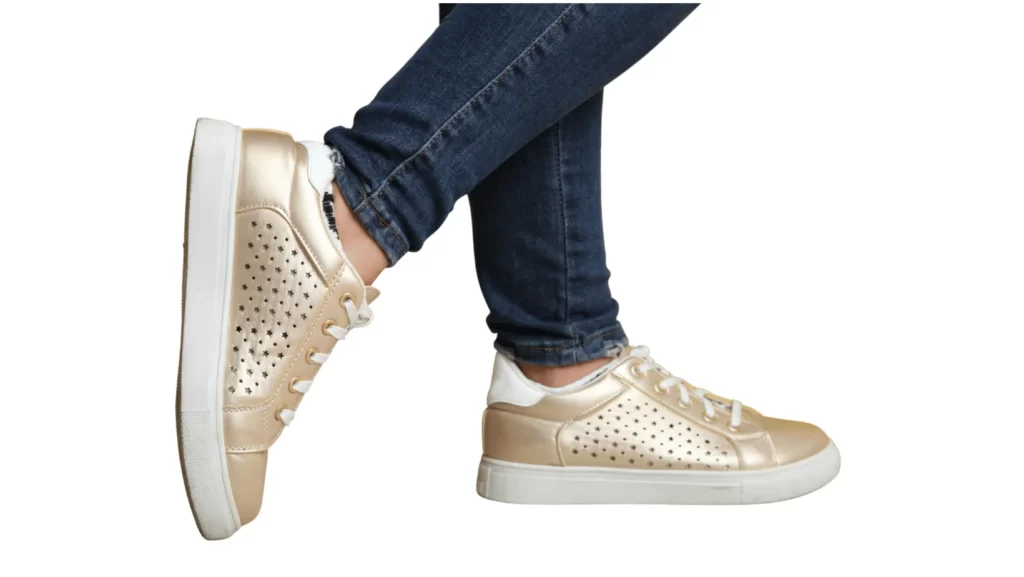
Loafers: Loafers and moccasins often have similar designs for both men and women, featuring a slip-on style with only a little difference in ornamentation.
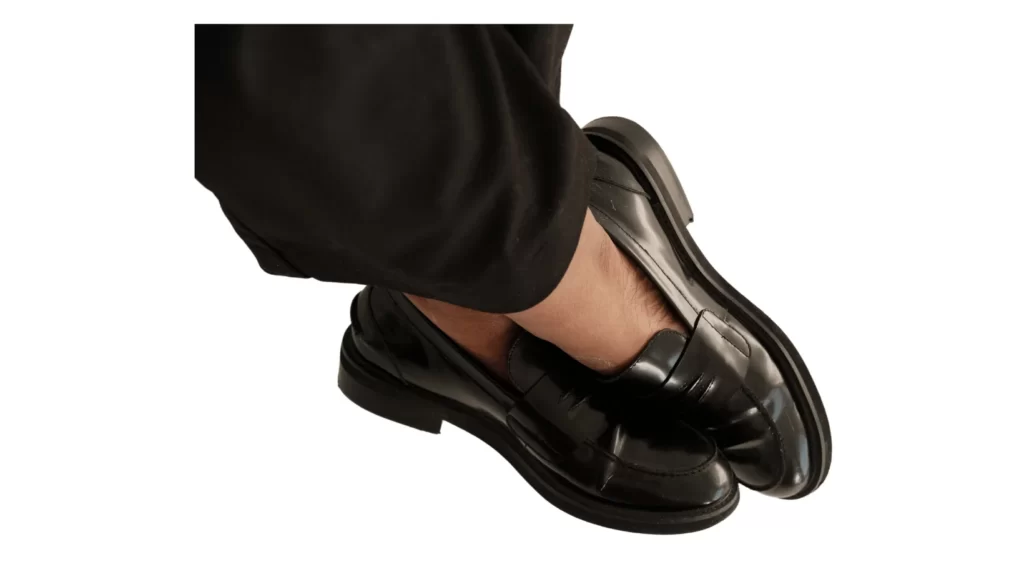
Boat Shoes: These comfortable shoes are typically designed alike for men and women.

Chukka Boots: Chukka boots trace their origin to India, where army men used to wear these ankle-high boots for the game of Polo. These simple have an unadorned design that can be worn by both men and women.

Chelsea Boots: Chelsea boots, easily recognizable by their elastic side panels, often have a similar design for men and women.
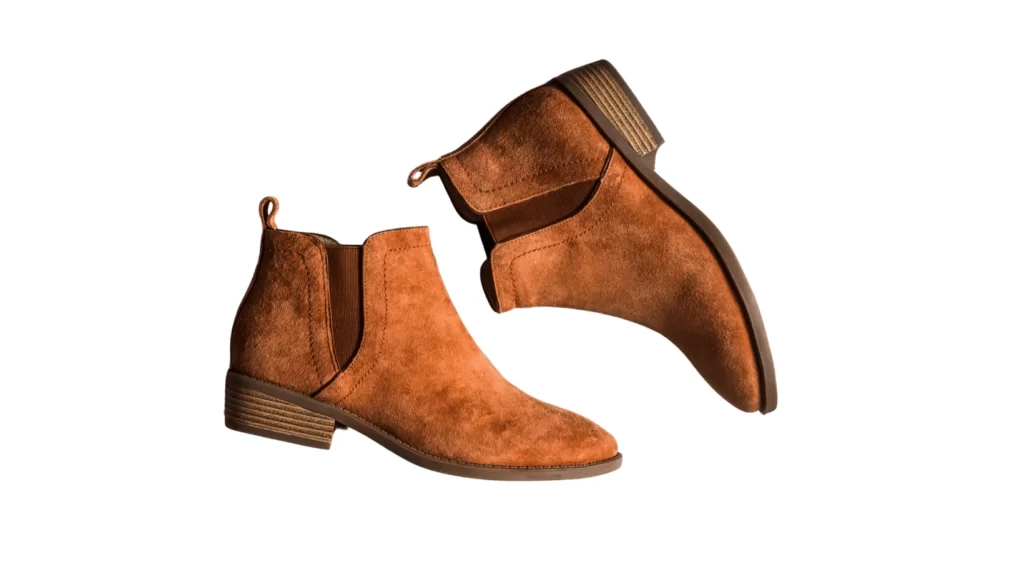
Desert Boots: These are a type of chukka boots with a simple design suitable for both men and women.
Oxfords: Worn on formal occasions, classic oxford shoes, both plain-toe or cap-toe, have very similar designs, for men and women.
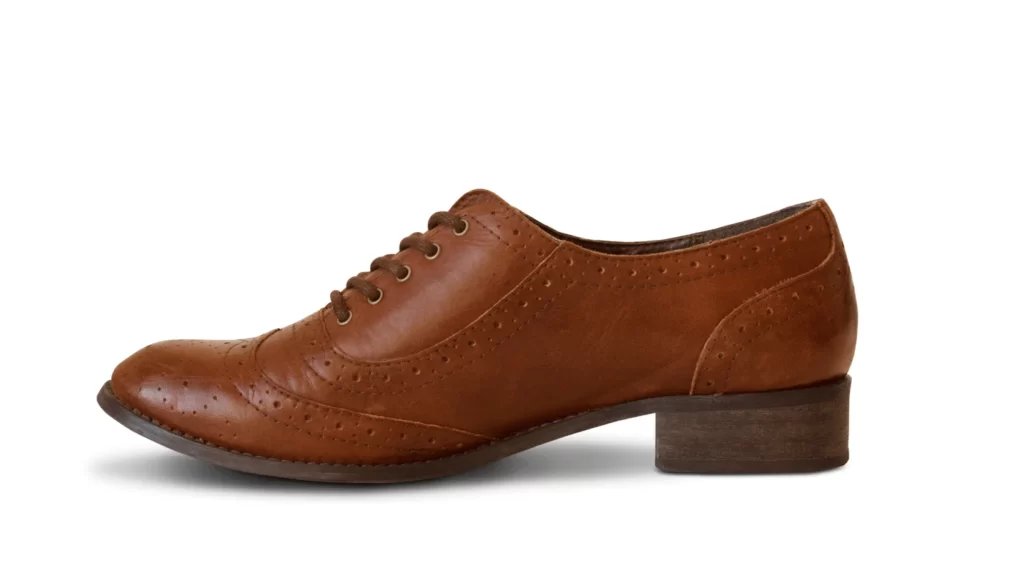
Slip-Ons: Casual slip-on shoes sometimes have a similar build and design, suited for both men and women.
Espadrilles: These lightweight, summer footwear is of Spanish origin and are often gender-neutral in looks and style with canvas uppers and jute soles.
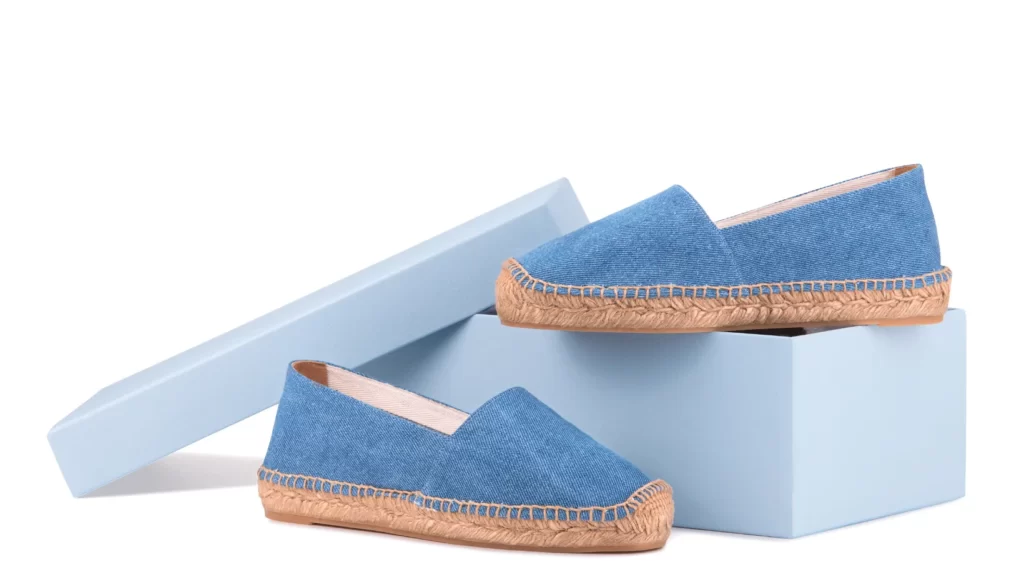
Takeaway
Men can wear women’s shoes if they provide a comfortable fit, regardless of color, design, or how the manufacturer brands them. Comfort should be the prime consideration for men who wear women’s shoes.
However, please consider the technical aspects arising from the physical differences between a man and a woman, that compel shoe manufacturers to design and engineer their shoes differently to improve comfort and well-being of the feet and knees. These technical aspects have been discussed in the subsequent sections.
Read also: How Long can a Woman Stay without a Man?
Can men wear women’s heels?

Nothing stops men from wearing high heels made for women. However, wearing heels designed for women can pose certain health concerns for men, just as it can for women. Also, it can have potential social implications, which have been discussed in Section 3. Listed below are some potential health issues associated with wearing high heels, regardless of gender.
- Foot Pain and Discomfort: High heels can cause foot pain and discomfort due to the unnatural position of the feet while you have the heels put on. This includes increased pressure on the balls of the feet, which can lead to conditions like metatarsalgia.
- Foot Deformities: Frequent wearing of high heels can contribute to the development of foot deformities such as bunions and hammertoes.
- Ankle Sprains and Injuries: The instability created by high heels can increase the risk of ankle sprains and other injuries, especially if you are not accustomed to walking in them.
- Balance and Posture Issues: High heels alter the body’s center of gravity, which can lead to balance problems and poor posture. This can cause musculoskeletal issues, including back pain and strained muscles.
- Achilles Contracture: Prolonged wearing of high heels can lead to the shortening of the Achilles tendon, potentially causing pain and reduced flexibility in the calf muscles.
- Joint Pain: The knees and hips can also be affected by the altered posture caused by high heels, leading to joint pain and discomfort.
- Circulation Problems: High heels can restrict blood flow to the lower limbs, potentially contributing to issues like varicose veins and swollen ankles.
- Nerve Compression: Prolonged pressure on the forefoot can compress nerves, leading to numbness and tingling in the toes.
- Increased Risk of Falls: Walking in high heels can increase the risk of tripping or falling, which can result in injuries.
- Long-Term Damage: Consistent use of high heels over an extended period may lead to chronic foot and lower limb issues that can persist even when not wearing heels.
Takeaway
It is a bad idea for men to wear women’s high heels, purely for health-related reasons. In fact, it is just as bad for women to wear high heels on a regular basis for the reasons given above.
Men and Women Shoe Size Chart – Rule of Thumb for Conversion
Women’s shoe sizes are generally smaller numerically as compared to men’s shoe sizes. Though there are variations in Europe, Asia, and other regions of the world, men’s shoe sizes are numerically larger.
As a rule of thumb, in US sizes, generally, a man would have to go up 1.5–2 sizes from his men’s sizing to find a corresponding fit in women’s sizing. For example, if a guy wears a size 8 in men’s sizing, an equivalent fit in women’s sizing would be a size 9.5–10. However, this is only an indication and is applicable only to US sizes.
Similarly, if a woman wants to wear a men’s shoe, she may want to go down 1.5–2 sizes to find an equivalent fit. This holds true for unisex shoes manufactured by leading US brands. Unisex shoes are usually in men’s sizing. Women looking to buy unisex shoes need to go down 1.5–2 sizes to find their fit, depending on the brand.
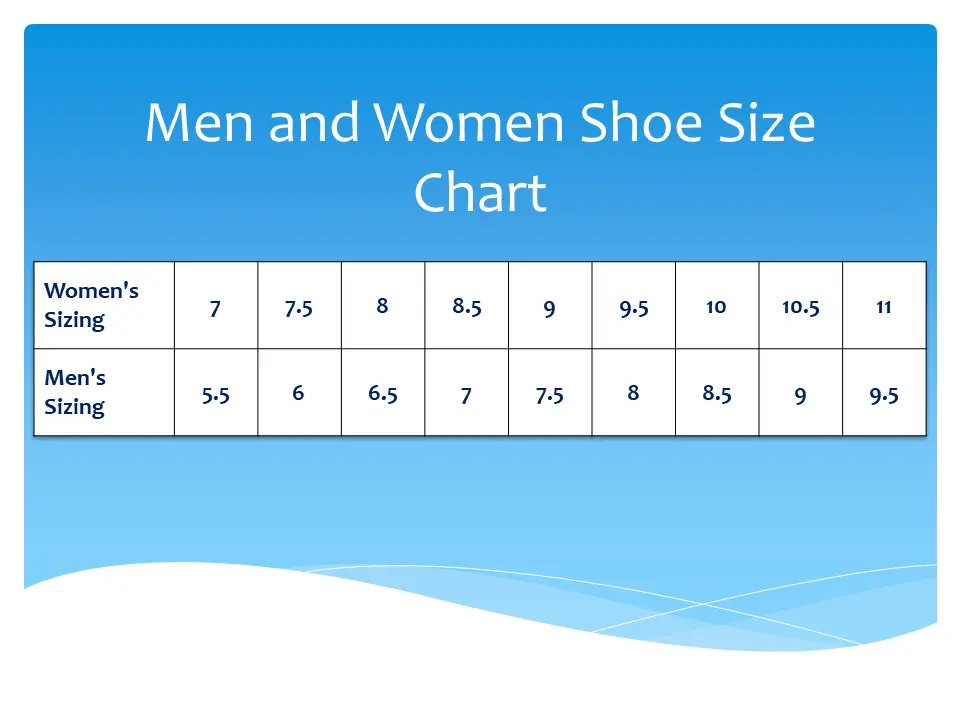
Conclusion
Yes, men can wear women’s shoes, subject to a few checks, including type of shoe, pronation pattern, and the ultimate test of proper fit and comfort. Though many would consider it a deviation from accepted social norms, asking, “Can men wear women’s shoes” indicates that you are willing to withstand the social implications of breaking the norms.
Este pequeño estudio sobre la intercambiabiludad del calzado entre sexos es curioso y extenso aunque no agota la materia. Lo digo porque he visto entre amigos alguno que. para estar en casa o salir al buzón o el supermercado, calzan habitualmente chinelas de mujer (zapatillas de andar por casa de piel y con cuña de 4 cm, doradas o de otros colores sin talón y ligeras y flexibles) aunque para las demás actividades usan el calzado tradicional. Esta práctica puede explicarse por la comodidad y la ligereza que estas chinelas proporcionan no sólo a mujeres sino también a hombres.
Saludos,
SLP
Thank you indeed for sharing your keen observation.